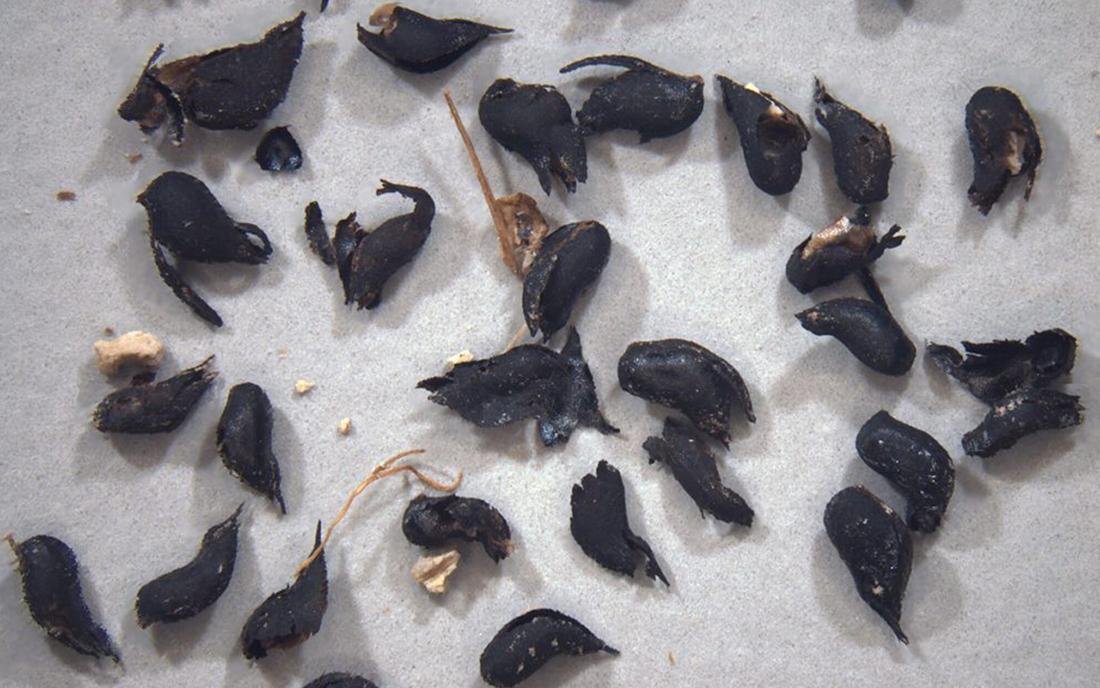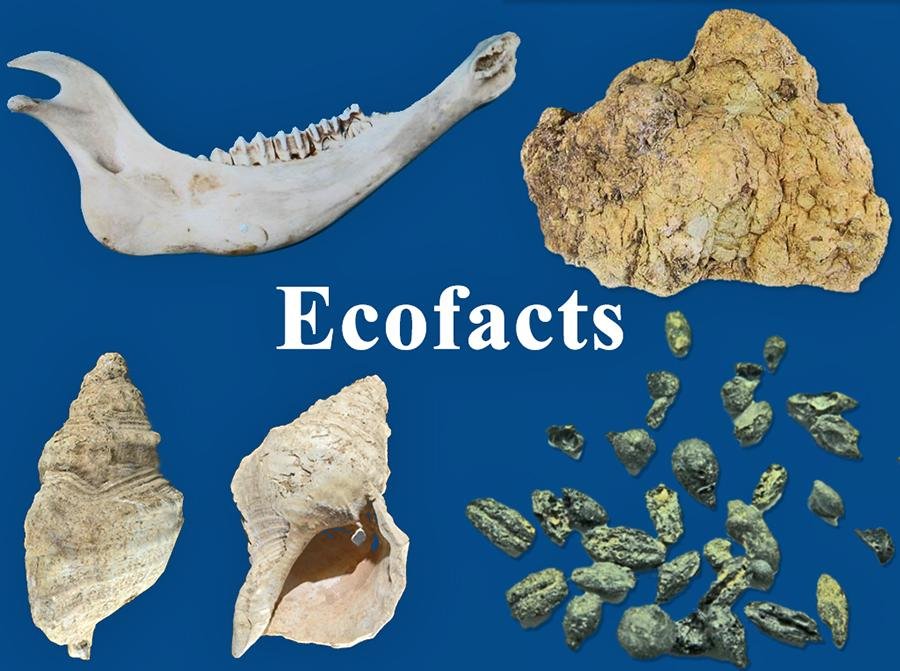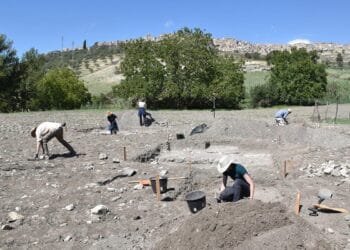Ecofacts are natural remains found at archaeological sites that provide valuable information about the environment, ecological conditions, and interactions between humans and their surroundings in the past.
Unlike artifacts, which are objects made or modified by humans, ecofacts are unmodified organic and environmental materials that have been preserved over time.
Ecofacts can include a wide range of materials, such as:
Faunal Ecofacts: These include animal remains such as bones, teeth, antlers, fish scales, and shells. Analysis of faunal ecofacts can reveal information about ancient hunting practices, domestication of animals, diet, subsistence strategies, animal behavior, fishing practices, aquatic resources, and the environment.
Floral Ecofacts: These encompass plant remains such as seeds, pollen, leaves, and wood fragments. Studying floral ecofacts can provide insights into ancient agriculture, gathering of wild plants, land use, and changes in vegetation over time.

Charred or Burned Ecofacts: These are the remains of organic materials that have been subjected to burning or charring, such as charred seeds or wood. They can offer evidence of past fire use, cooking methods, land management practices, and potentially human impact on the landscape.
Microscopic Ecofacts: These are tiny organic remains that require microscopic analysis to identify, such as phytoliths (microscopic plant silica), starch grains, pollen, and fossilized insect remains. Microscopic ecofacts can yield information about plant use, past diets, environmental changes, and human activities.
Coprolites: These are fossilized human or animal feces. Analyzing coprolites can offer details about diet, health, parasites affecting past populations, and even cultural practices related to waste disposal.
Sediments and Soil Samples: Analyzing sediment and soil layers can provide information about changes in land use, erosion, and soil composition.
Methods of Analysis
The study of faunal ecofacts falls under the realm of zooarchaeology. Researchers analyze animal bones to identify species, age, sex, butchery marks, and evidence of domestication or hunting strategies.
Palynologists study pollen and spores to reconstruct past vegetation and environmental changes. Pollen analysis provides insights into shifts in climate and land use.
Archaeobotanists study plant remains, including seeds, fruits, and wood fragments. They can determine the types of crops grown, plants gathered, and even ancient trade networks based on plant remains.

The micromorphological analysis involves examining thin sections of sediments under a microscope. This helps archaeologists understand soil formation, human activities, and site use.
Context is crucial for interpreting ecofacts. Their location within archaeological layers can reveal information about the timing and purpose of their deposition.
Ecofacts are essential for reconstructing ancient ecosystems, understanding human adaptation to changing environments, and studying how past societies interacted with natural resources. By analyzing ecofacts alongside artifacts and features (structural remains), archaeologists can create a more holistic picture of past human cultures and their relationships with the natural world.


























